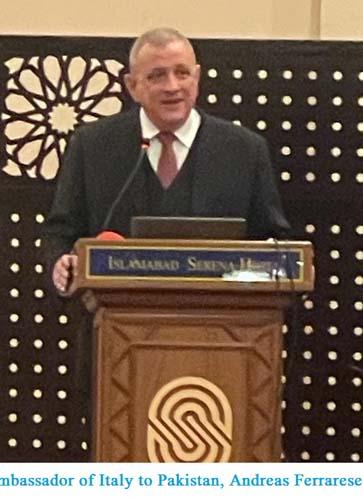
Italy needs 280,000 migrants a year: IDOS
Rome: Due to its aging population, Italy would need at least 280,000 foreign workers a year until 2050 to compensate for the shrinking national labor force, the IDOS Study and Research Centre has said ahead of the publication of its 2023 immigration statistics dossier.
With Italy’s population aging further, the country will need at least 280,000 new arrivals from abroad each year until 2050 to compensate for the decline in the working-age population, which is projected to decrease by 7.8 million people by 2050.

This is according to a note by IDOS, published on October 17 in collaboration with the Centro Studi Confronti and Istituto di Studi Politici ‘S. Pio V’.
The note stressed that “obstinate policies of closure towards migrants have actually blocked entry pathways for workers over the past 12 years, fuelling a labor shortage in vital parts of the national economy” and hampering the demographic stability of the country.
It also recalled that the government approved on September 27 a new programming document for the legal entry of foreign workers in the period 2023-2025, “18 years after the last three-year program was approved for the 2004-2006 period”.
However, the latter “also included integration policies that are not contemplated this time,” IDOS noted.
“Overall, 452,000 foreign workers will be admitted into Italy: 136,000 in 2023, 151,000 in 2024 and 165,000 in 2025,” IDOS said.
According to the analysis carried out by IDOS, the measure approved under strong pressure from employers struggling with a serious labour shortage breaks a 12-year-long paralysis, although it is far from covering the effective needs of the economy estimated by the government to be around 833,000 workers over the same three-year period: 274,800 for 2023, 277,600 for 2024 and 280,600 for 2025.
The so-called ‘Cutro Decree’ approved at the beginning of 2023, the note explained, apart from minor improvements, did not touch the main aspects of the legislation on immigration (Testo Unico dell’Immigrazione) approved in 1998, which was harshened by the Bossi-Fini law in 2002, regulating the recruitment of foreign workers based on internal demand.
Under current legislation, a foreign worker needs to be recruited while still living abroad by an employer in Italy, who needs to know his or her name. The system is complex given that three in four foreign workers in Italy are employed by medium-sized and small companies, mainly family-owned, or by families as domestic workers and carers, or in contexts in which a relationship of trust is key to hire someone.
In addition, the 2002 Bossi-Fini law abolished entry permits for those seeking employment, thanks to which an immigrant could legally reside in Italy for a year. This has led to the use of entry quotas to actually stabilize migrants who already have a job in Italy in what has amounted to masked regularizations, the research centre noted.
Even when regularly employed, foreign workers in Italy often have unstable, exhausting, underpaid jobs that are hazardous for their health, IDOS noted. Nearly two foreign workers in three are low-skilled — twice the rate of Italians. This type of employment is also reflected in salaries that are about one-quarter lower than the national average.
Luca Di Sciullo, president of the IDOS Centre of Studies and Research, denounced “a scenario in which the fast and structural aging of the local population, together with the departure of the youngest and most qualified part of the working population from Italy, is reducing the employment level, hindering the country’s productivity and competitiveness.”
Di Sciullo stressed that, in this context, it is “fundamental to set aside outdated and vicious legislation,” proposing a reform of “mechanisms of legal entry for foreign workers linked to internal demand” and the “reintroduction of entry permits for a year to search for employment”.
